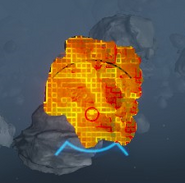Night vision has its uses, but also destroys what little stealth gameplay is left in Elite Dangerous. Just look at the amount of Youtube videos with it on to see.
This suggestion is simple- please either:
1: apply a falloff so that beyond 1km it does not highlight anything
2: apply a pixelation filter the further away an object is, so that ships cannot be easily made out (such as the pulse wave analyzer effect)
3: exclude certain objects based on sensor grade. Examples:
E sensors- everything is pixellated in night vision, no ships appear until within 250m
D sensors- everything is pixellated in night vision, ships appear but are hard to pick out at 500m
C sensors- pixels are smaller, but still noisy and only large objects can be made out at 500m
B sensors- pixels smaller again, medium objects made out to 750m
A sensors- no pixelation, small objects (SLF size) made out to 1000m
More involved ideas:
For detection beyond 1km for ships, have night vision supplemented with infra red (heat) tracking.
4: change the night vision from the line shader to the pulse wave scanner effect:

And then base night vision beyond a certain range on heat- so hot engines light up but cool ships are dark.
This could be an engineering effect, experimental but it would add layers to sensors.
This suggestion is simple- please either:
1: apply a falloff so that beyond 1km it does not highlight anything
2: apply a pixelation filter the further away an object is, so that ships cannot be easily made out (such as the pulse wave analyzer effect)
3: exclude certain objects based on sensor grade. Examples:
E sensors- everything is pixellated in night vision, no ships appear until within 250m
D sensors- everything is pixellated in night vision, ships appear but are hard to pick out at 500m
C sensors- pixels are smaller, but still noisy and only large objects can be made out at 500m
B sensors- pixels smaller again, medium objects made out to 750m
A sensors- no pixelation, small objects (SLF size) made out to 1000m
More involved ideas:
For detection beyond 1km for ships, have night vision supplemented with infra red (heat) tracking.
4: change the night vision from the line shader to the pulse wave scanner effect:

And then base night vision beyond a certain range on heat- so hot engines light up but cool ships are dark.
This could be an engineering effect, experimental but it would add layers to sensors.
